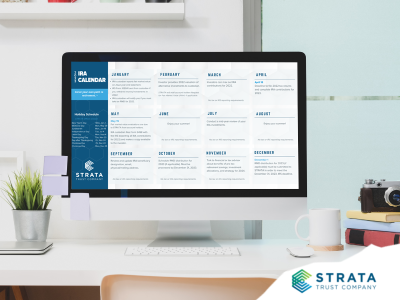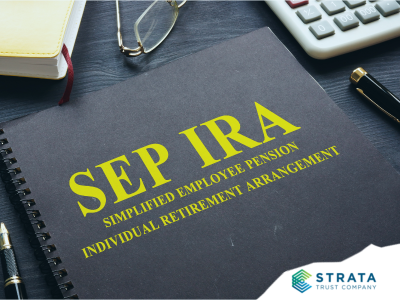Some economists maintain that the U.S. is in or about to enter a recession. That can lead to a drop in the stock market, increased unemployment, and rising inflation. Market downturns and recessions can be particularly tough on retirees or those nearing retirement. A reduction in the value of retirement funds combined with an increase in the cost of living might force retirees to adjust their spending or postpone retirement.
As the possibility of recession increases, so does market volatility and portfolio risk. Reducing volatility and risk can help retirees weather recessionary times. Portfolio diversification is one of the best risk mitigators, but diversifying with the traditional asset classes most often offered in retirement portfolios is not always possible. Self-Directed Individual Retirement Accounts (SDIRAs) allow retirement savers to implement more complete diversification in their overall investment strategy, and SDIRA account holders view diversification as one of the most powerful tools for mitigating portfolio risks.1 Investors might not be able to avoid recessions, but they can help recession-proof their retirement portfolios.
Benefits of a Diversified Portfolio
Asset correlation measures how different investments move in relation to one another. Assets are considered positively correlated when they move in the same direction simultaneously. They are considered negatively correlated when they move in opposite directions.
Economists like Harry Markowitz, the father of Modern Portfolio Theory, generally agree that diversification – mixing correlated and uncorrelated assets – is an essential strategy for managing risk in investment portfolios.2 Simply put, you should “not put all your eggs in one basket.” Spreading investments across various assets, such as stocks, bonds, real estate, commodities, etc. from different industries and geographical locations, can help in several ways:
Reduce Risk – When markets move up or down, assets with negative correlation can help to smooth out the potential returns of a portfolio by offsetting losses in one asset class with gains in another.
Optimize Efficiency – A key concept of modern portfolio theory is the idea of the efficient frontier, which means that for a given level of risk, an optimal portfolio of diversified assets will yield the highest expected return.
Increase Portfolio Flexibility – A well-diversified portfolio allows investment allocations to be adjusted as market conditions or an individual’s personal circumstances, goals, or risk tolerance changes.
Improve Returns – Since asset classes perform differently over time, diversifying investments increases the likelihood of having exposure to the assets that are performing well at any given time.
Reduce Emotional Stress – The security of a diversified portfolio helps prevent emotionally based decisions and panic selling during market downturns that can hurt retirement savings.
Most importantly, when you diversify a portfolio, you create a potential hedge against inflation. Asset classes like real estate and commodities tend to perform well during periods of high inflation, while bonds do not. Diversification can, therefore, help portfolios weather market volatility and preserve retirement savings, thereby protecting retirement assets from the impact of a recession.
Alternative Investments – The Portfolio Diversifier
Alternative investments include real estate, commodities, private equity, hedge funds, venture capital, and more. These assets have different risk-return profiles compared to traditional investments. In other words, they have a low correlation to traditional investments such as stocks and bonds. As such, if traditional assets experience declines during a recession, the low correlation of alternative investments can help recession-proof a retirement portfolio by providing portfolio stability and even positive returns. For example, real estate may provide stable income through rental payments, while commodities like gold or oil can act as an inflation hedge.
Alternative investments are not without their own set of risks. They are less liquid than traditional assets, and their valuations may be less transparent. Additionally, some alternative investments require higher minimum investments or may have longer lock-up periods, limiting liquidity and access to funds.
SDIRAs – The Diversification Vehicle
Diversifying retirement investments across different asset classes, sectors, and geographical regions can reduce risk, improve returns, and provide a hedge against inflation. Most retirement portfolios, such as 401(k) plans and IRAs, only hold traditional stock and bond investments. SDIRAs, on the other hand, provide access to alternative assets and are one of the best ways to create true portfolio diversity.
A wide range of investment options can provide more control over a retirement portfolio and allow investors to better align their investments with their specific financial goals (like their desired retirement age and lifestyle), risk tolerance (how much volatility or potential loss they are comfortable with), and investment timeline (how long until they need to start drawing on their investments).
Naturally, the more investment options included in a portfolio, the more investments that need to be researched and monitored. But the recession-proofing benefits of diversification far outweigh such hurdles. Helping to limit the reduction in the value of retirement funds during times of recession can help investors maintain their standard of living and retire with dignity.
Additional Information
Financial advisors can be a valuable resource to help investors manage their SDIRAs, diversify their portfolios, and recession-proof their retirement.
Learn more about the variety of investment options available to diversify your portfolio by visiting our Self-Directed IRA Knowledge Center or connecting with one of our self-directed IRA experts.
1 Strata Trust Company, 2022 Self-Directed IRA Investor Survey Report (2022).
2 Harry Markowitz, Portfolio Selection, The Journal of Finance, Vol. 7, No. 1 (Mar. 1952).


















